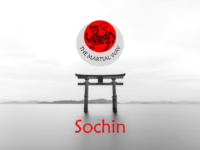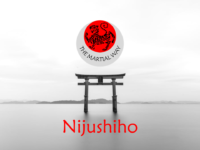Sochin is most commonly interpreted as "Strength and Calm" or "Energetic Calm." The translations of "Preserve the Peace," or even "Peacekeeper," are also sometimes used. Sochin is a very bold and sturdy kata, marked by a commanding physical and spiritual strength. It is generally considered as a Seisho Aragaki kata. Of the three Aragaki kata practiced in Shotokan, Sochin is…
Learn more
Sochin








